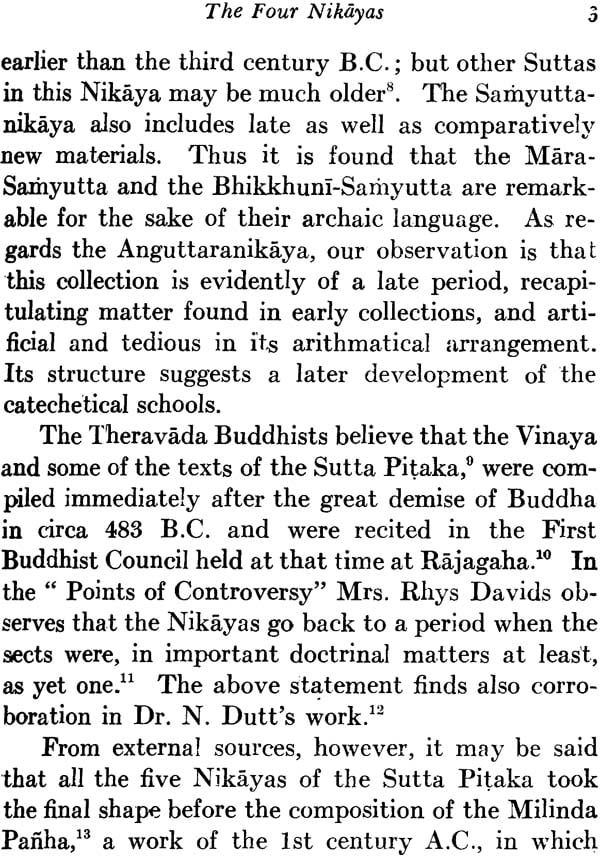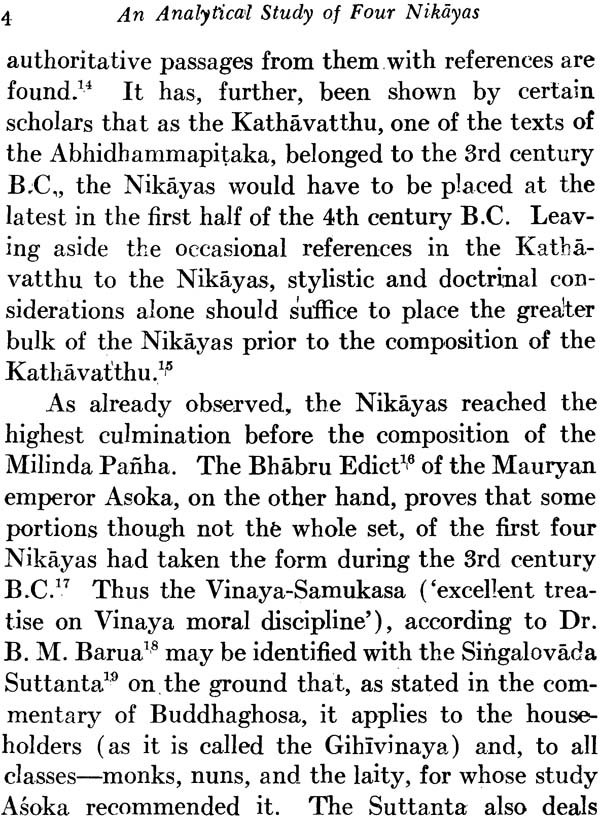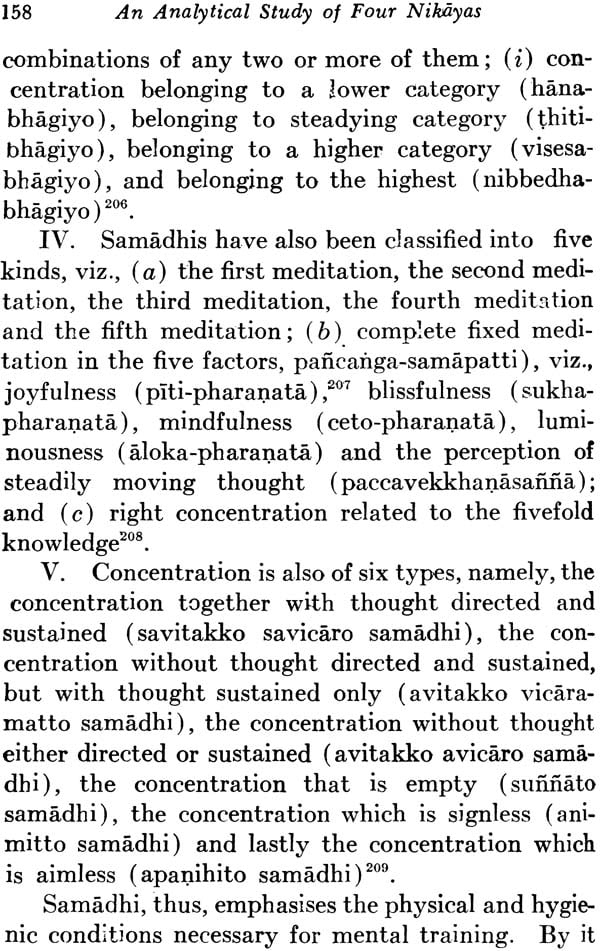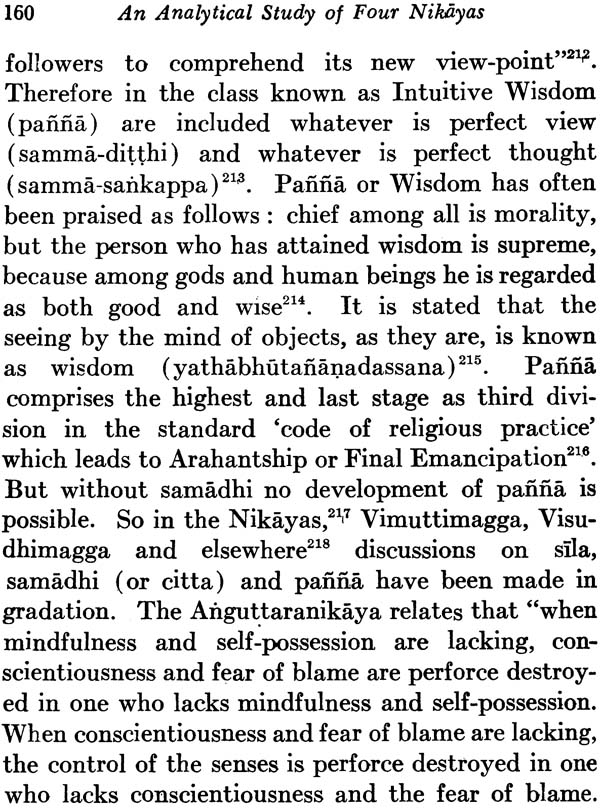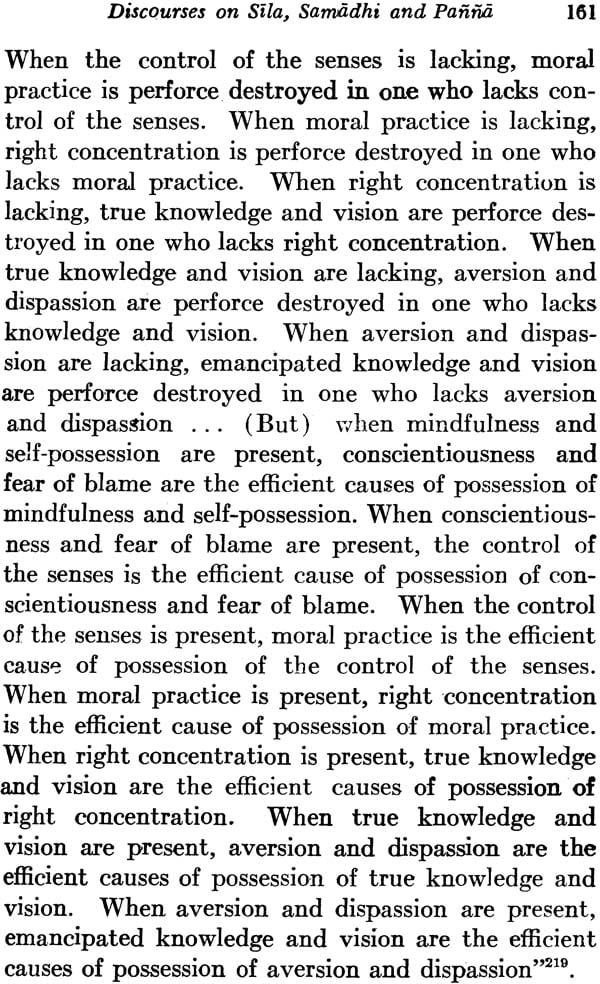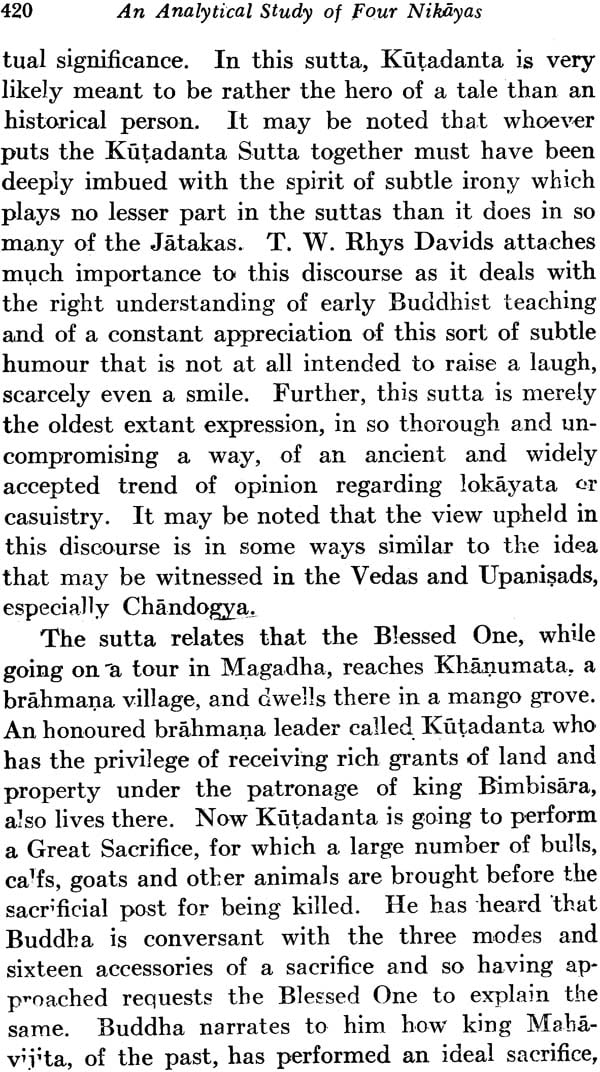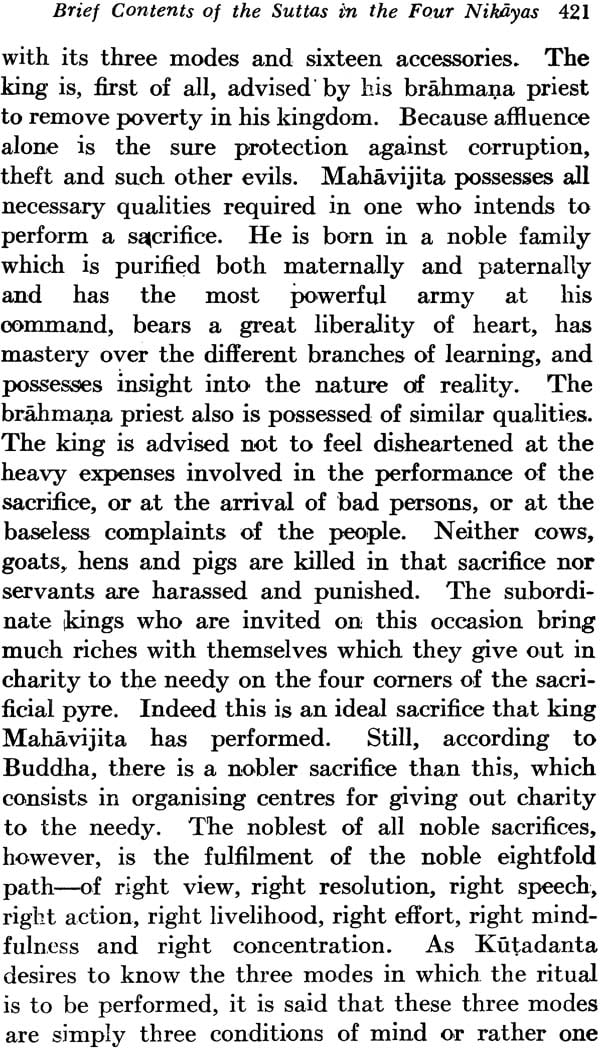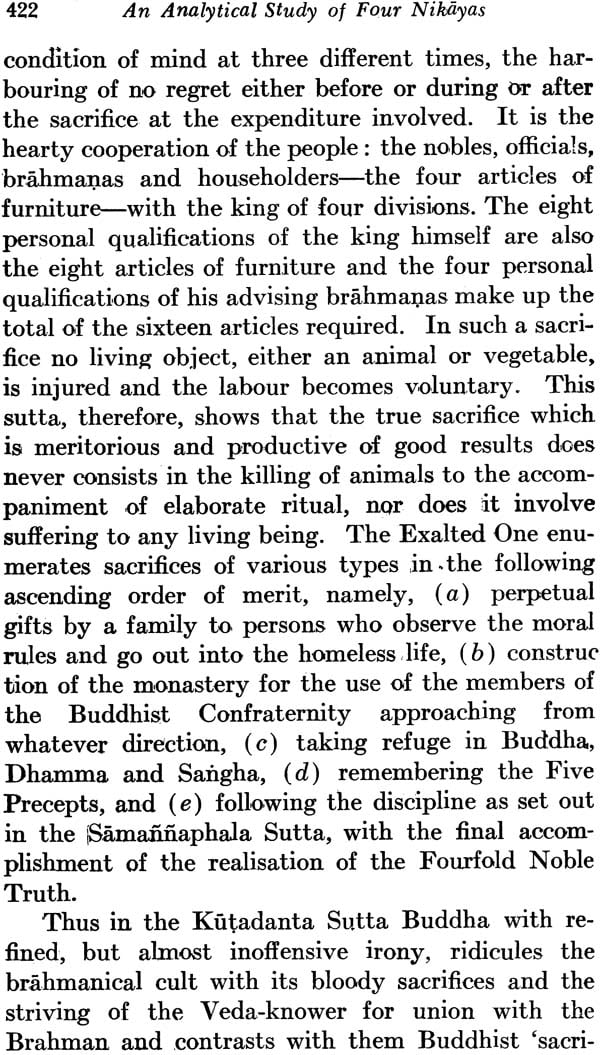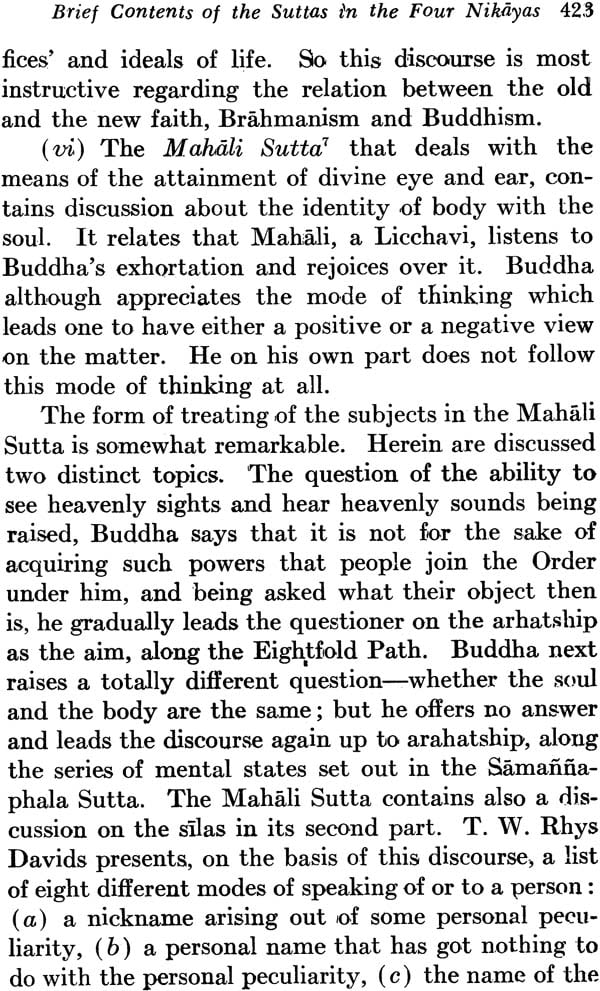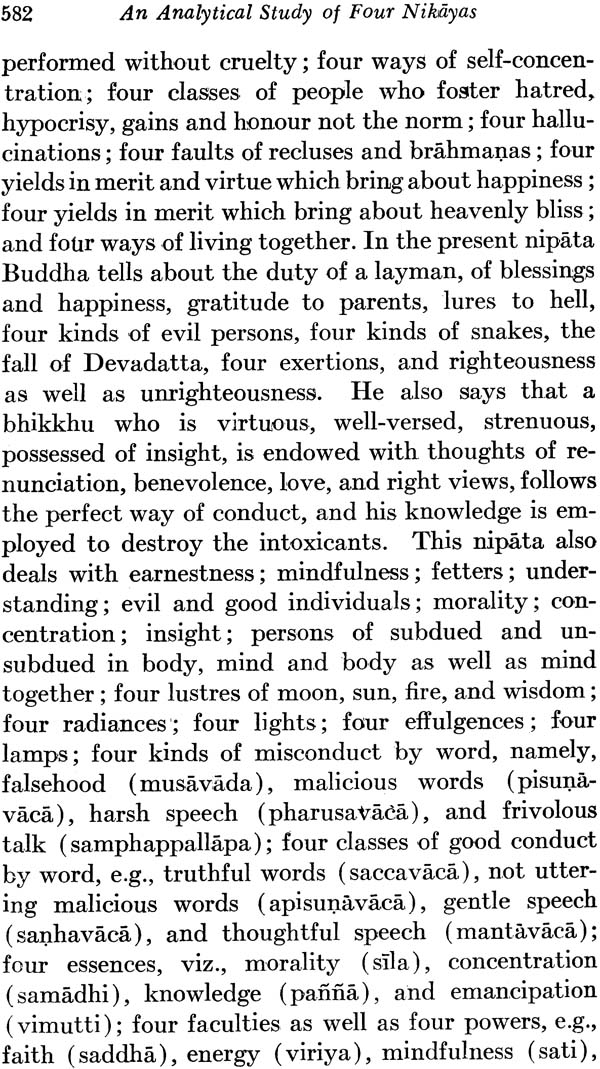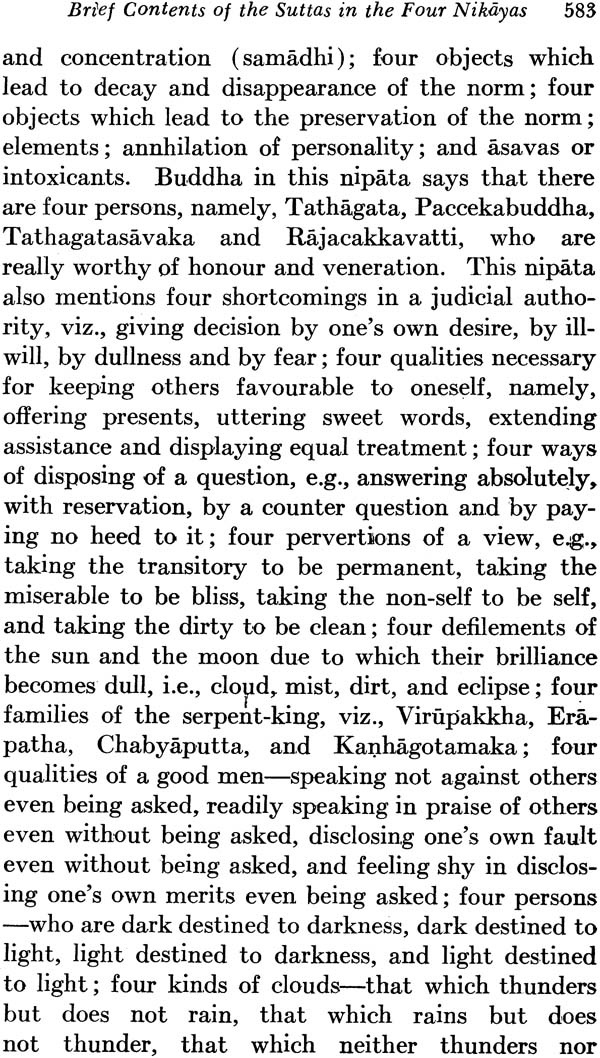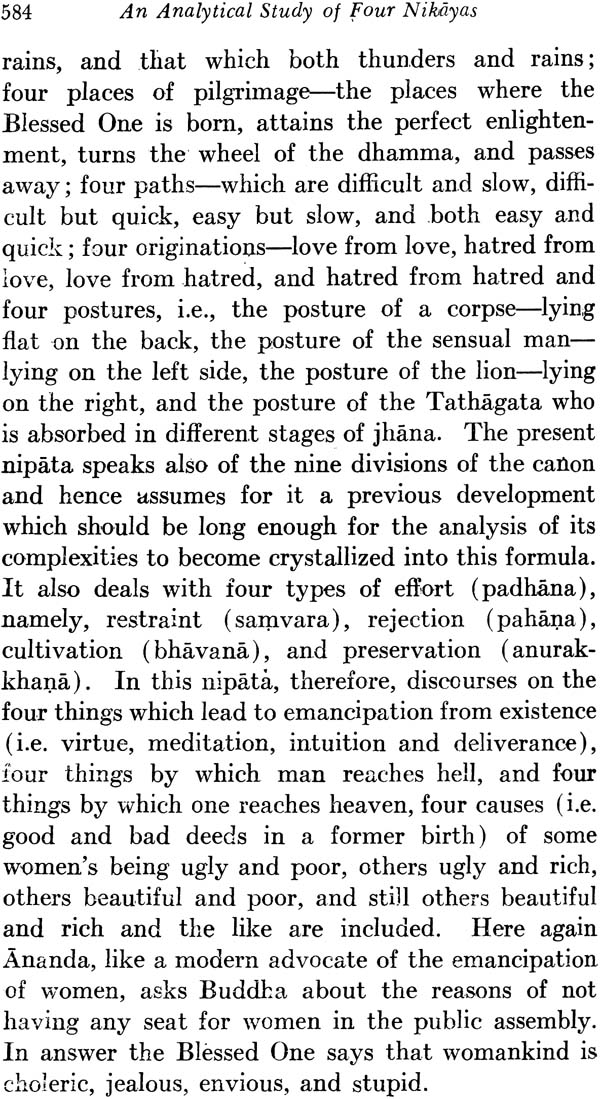
An Analytical Study Of Four Nikayas
Book Specification
| Item Code: | IDD903 |
| Author: | Dipak Kumar Barua |
| Publisher: | MUNSHIRAM MANOHARLAL PUBLISHERS PVT LTD |
| Language: | English |
| Edition: | 2010 |
| ISBN: | 9788121510677 |
| Pages: | 643 |
| Cover: | Hardcover |
| Other Details | 8.8" X 6.0" |
| Weight | 900 gm |
Book Description
About the Book
The first four Nikaya-texts belonging to the Suttapitaka of the Pali Tipitaka which contains the sacred sayings of Gotama (Skt. Gautama) Buddha are of inextimable value since they provide important source-materials to study the religio-cultural history of the contemporary period. From the sociological point of view to they are of utmost significance, because they vividly present the daily life of the people of ancient India. Hence the importance of the Nikayas can neither be gainsaid nor exaggerated. In fact, this work contains an outline study of the four Nikayas, namely, Dighanikaya, Majjhimanikaya, Samyttanikaya, and Anguttaranikaya, which belong to the Theravada Pali Canon, on some select aspects in five chapters and three appendices treating of the age of the Nikayas, comparative study between the Sanskrit/Chinese Agamas and Pali Nikayas, their language, Buddha's discourses to the laity, teachings of Early Buddhism under the threefold divisions of Sila, Samadhi and Panna, discussions on administrative, social and economic condition of ancient India, Historical and geographical materials found in the Nikayas, mutual relation of the treatment of similes in the Suttas of those Nikayas. In the present work, on the whole, an attempt has been made to introduce the first four Nikayas-texts in their entirety.
About the Author
Dipak Kumar Barua (born 1938) is a well-known Pali scholar with a brilliant academic record. He retired as Professor and Head of the Department of Pali, University of Calcutta. He was also nominated National Lecturer in Pali by UGC and became the Director of Nava Nalanda Mahavihara, Nalanda. His published work are: Anagarika Dharmapala: A Study (1964); Catalogue of Folklore Exhibition (1966); Vihara in Ancient India: A Survey of Buddhist Monasteries (1969); An Analytical Study of the Four Nikayas (1971, 2002); Buddha Gaya Temple; Its History (1975, 1981); Buddhist Art of Central Asia (1981); Ruparupa-Vibhaga of Acariya Buddhadatta Thera, Pali text with English translation and notes (1995); Buddhadattakrta Ruparup-Vibhaga, Pali text with Bengali translation and note (1997).
| Foreword | ix |
| Preface to the Edition | xiii |
| Preface to the First Edition | xv |
| Acknowledgements | xviii |
| THE FOUR NIKAYAS | 1 |
| DISCOURSES TO THE LAITY | 64 |
| DISCOURSES ON SILA, SAMADHI AND PNNA | 121 |
| DISCUSSIONS ON SECULAR MATTERS - ADMINISTRATIVE SOCIAL AND ECONOMIC | 175 |
| HISTORICAL AND GEOGRAPHICAL MATERIAL IN THE NIKAYAS | 272 |
| APPENDIX ONE Mutual Relations of the Four Nikaya | 367 |
| APPENDIX TWO Treatment of Similes in the four Nikaya | 376 |
| APPENDIX THREE Brief contents of the Suttas in the Four Nikaya | 403 |
| Select Bibliography | 597 |
| Index to Names | 609 |
| Index to Subjects | 618 |


